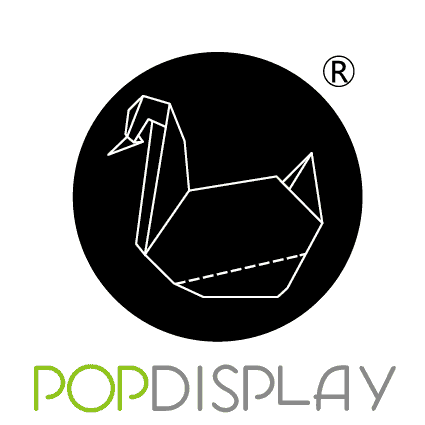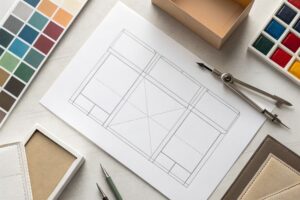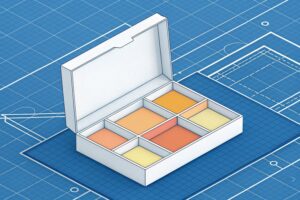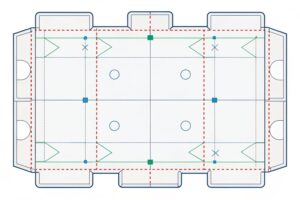What kinds of merchandising baskets do we have to offer?

A busy store can hide your product. I felt that pain when my first cardboard crossbow display got ignored, so I studied baskets that pull eyes and lift sales.
We manufacture four core merchandising baskets—wire dump bins, tiered cardboard trays, clip-on shelf baskets, and floor-standing corrugated bins—each custom-printed, strength-tested, and shipped flat for quick set-up.
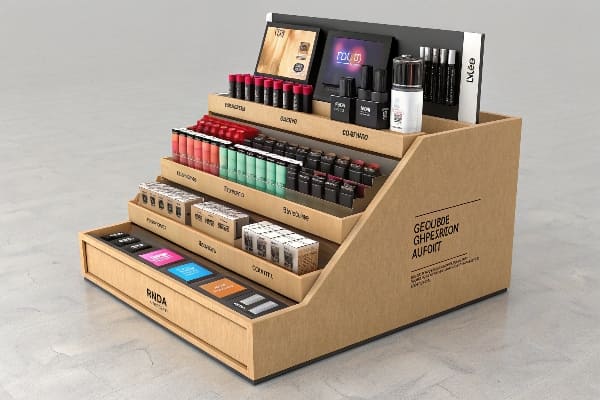
My goal now is to show how these baskets fit time-tested frameworks so you can pick the right one without the usual trial and error.
What are the 4 types of merchandising?
Many guides list dozens of tactics, which can overwhelm. I start my design meetings by mapping displays onto only four merchandising types—it calms discussion and speeds decisions.
The four merchandising types are product, price, place, and promotion—each focuses on what you sell, what it costs, where it sits, and how you highlight it.
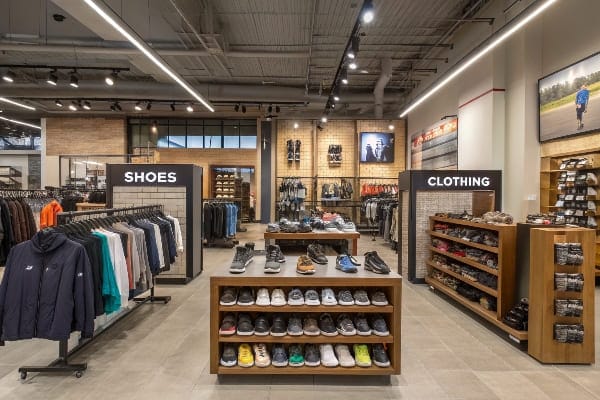
Why the four-type model1 matters
The model forces me to ask one question at a time. When David from Barnett Outdoors emails about a new hunting-knife stand, we first lock the product story. Only after that do we tweak price cues, footprint, and promotional graphics2. Separating the layers prevents last-minute redesigns that blow deadlines.
Using baskets to express each type
| Type | Core Question | Basket Example |
|---|---|---|
| Product | Does the item solve a clear need? | Tiered tray lets shoppers compare crossbow bolts size by size. |
| Price | Is the value obvious? | Clip-on shelf basket carries a bold “2-for-$5” card at eye level. |
| Place | Can buyers grab it fast? | Floor dump bin sits at aisle entrance to intercept traffic. |
| Promotion | What nudges the impulse? | Corrugated header shows a hunter drawing a bow in action. |
I keep prototypes simple: white board, one color, no gloss. If the concept feels right in this bare form, I know full print will sing. Your team can try the same: strip back detail, test flow, then layer branding later.
What is merchandise offered?
Every day I hear, “We already have great products—why stress the offer?” The offer is the bridge between product and shopper. Ignore it and even perfect goods stagnate.
Merchandise offered is the total bundle of product mix, price, quantity, and display that a retailer presents at one moment.
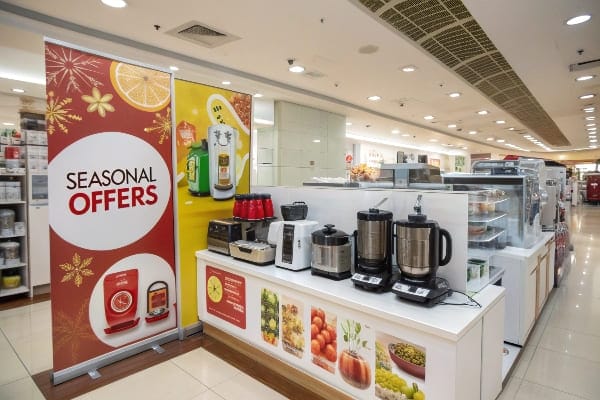
Elements that shape a compelling offer
| Element | Purpose | My checklist before mass production |
|---|---|---|
| Assortment depth3 | Covers varied tastes | At least three sizes or colors in one basket |
| Pricing style4 | Signals deal or prestige | Clear digits, no faded stickers |
| Quantity | Prevents out-of-stock gaps | Refill threshold marked on tray back |
| Display vehicle5 | Tells the story | Custom graphics printed after first test sell-in |
Strong offers talk to two brains. Logic sees specs and savings; emotion sees lifestyle imagery. When I mocked up Barnett’s “Back-Forty Hunt Pack,” we paired cost breakdowns with a campfire photo. The first rollout tripled basket turns in Bass Pro stores versus plain packaging. Make sure every offer you ship blends those rational and emotional hooks; a basket is merely the stage.
What are the 5 C’s of merchandising?
Teams chase flashy trends yet overlook basics. I remind them with the 5 C’s checklist taped above my plotter—nothing ships until each C is ticked.
The 5 C’s are Color, Coordination, Clarity, Consistency, and Communication; together they guide how a display looks, relates, and speaks to shoppers.
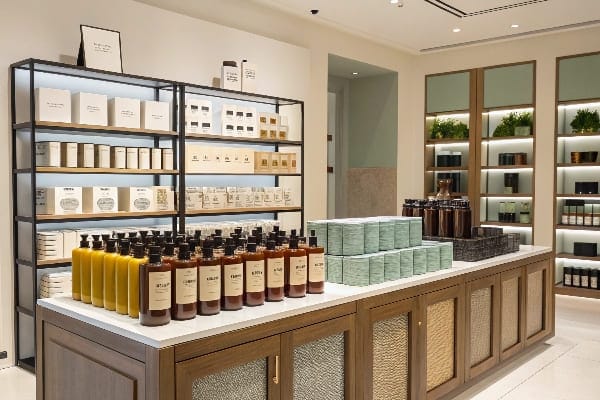
Mapping the 5 C’s onto basket design
| C | Practical Question | Basket Tactic |
|---|---|---|
| Color | Does hue stop the eye? | Use a single bold accent that contrasts shelf tones. |
| Coordination | Do parts feel related? | Match tray side walls to product labels. |
| Clarity | Can I grasp use in one glance? | Add a line-art assembly sketch on bin front. |
| Consistency | Does style repeat across sizes? | Keep typography identical on mini and maxi trays. |
| Communication | Does message trigger action? | Print a QR that loads a bow-tuning video. |
Why these C’s never age
Color preference shifts6, but contrast grabs attention in any decade. Coordination builds trust—shoppers assume a tidy look equals reliable goods. Clarity reduces the cognitive tax7; fewer mental steps mean faster add-to-cart moments. Consistency cements brand memory, vital for repeat orders that fund our free prototyping policy. Finally, communication sparks dialogue: the moment a hunter scans that QR, the physical display hands the baton to digital content, keeping Barnett top of mind long after checkout.
What are the 5 R’s of merchandising?
Late deliveries cost money; wrong quantities cost more. I rely on the 5 R’s to guard profits before the printer starts rolling.
The 5 R’s are the right product, right place, right price, right quantity, and right time—five checkpoints that cut waste and boost sell-through.

Turning the 5 R’s into a production timeline8
| R | Supplier Action | Retail Impact |
|---|---|---|
| Product | Final CAD cutfile approved | Display footprint matches planogram |
| Place | Pre-label cartons by store | Staff unloads to exact aisle |
| Price | Print price strips in factory | No frantic sticker guns in store |
| Quantity | Run just-in-time pallets9 | Freed backroom space |
| Time | Book vessel three weeks early | Launch aligns with hunting opener |
I build a Gantt chart10 with these R’s as milestones. Every vendor touchpoint lines up under the matching R, so gaps show instantly. During COVID port delays, that chart saved a Midwest launch: we air-freighted only header cards (right product) while sea freight carried the lower-risk blank bins (right quantity). The launch still hit the right time.
What is the best merch to sell?
Entrepreneurs often ask for a magic list of “hot items.” I point them to data, but I also share a simple rule: the best merch solves a need already proven by early sales.
The best merchandise is repeat-driven, margin-rich, and small enough to display near checkout, such as branded drinkware or tech accessories.
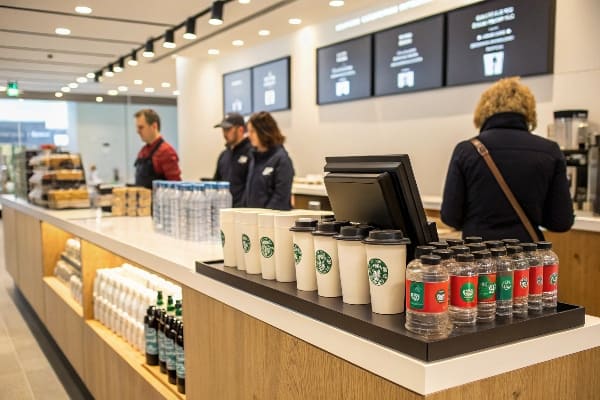
Filtering winners with my three-lens test
| Lens | Question | Example that passed | Example that failed |
|---|---|---|---|
| Velocity11 | Will it sell weekly? | Logo water bottle | Limited-edition belt buckle |
| Margin12 | Does price cover ads? | Phone grip at 70 % GM | Bulky sweatshirt at 35 % GM |
| Footprint13 | Does it fit a tray? | 8 cm box | 40 cm tube |
Velocity keeps cash flowing for reorders—the heart of my profit model. Margin finances marketing; without it, you burn capital. Footprint links back to baskets: a tiny item on a big stand wastes rent. When Barnett added a bow-string wax tin that met all three lenses, its clip-on basket paid for itself in nine days.
What are the general merchandise categories?
Stores feel chaotic until you sort goods into buckets. I use broad categories first, then slice finer for planograms.
General merchandise divides into hardlines, softlines, consumables, and specialty items, covering nearly every product on a retail floor.
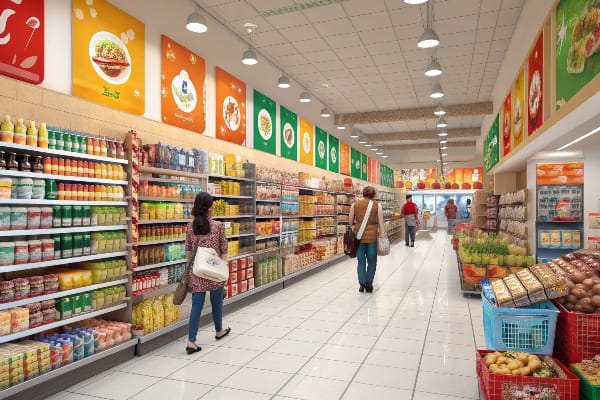
Category map for faster planning
| Category | Traits | Basket Suggestion |
|---|---|---|
| Hardlines | Durable goods (tools, electronics) | Wire dump bin with anti-static liner |
| Softlines | Apparel, textiles | Tiered cardboard shelves with hook-and-loop folds |
| Consumables | Food, cosmetics | Clip-on shelf baskets within reach of hand |
| Specialty | Seasonal, luxury, oversized | Floor-standing corrugated tower |
Breaking ranges this way lets buyers focus margins where it matters. For instance, consumables rotate fast, so lightweight clip-on baskets14 that restock in seconds beat heavier floor bins. Hardlines can carry more weight; here I double-wall the corrugate and add load-bearing feet, a factory feature that helps us guarantee test performance. By matching category traits to basket engineering15, you reduce returns and boost shopper trust.
Conclusion
Choose your basket only after you answer the 4 T’s—type, C’s, R’s, and category. When each fits, the basket turns shoppers into loyal repeat buyers.
Understanding the four-type model can enhance your marketing strategy by ensuring clarity and focus in product development. ↩
Learning about effective promotional graphics can significantly boost your product’s visibility and appeal to potential buyers. ↩
Understanding assortment depth can help you create offers that cater to diverse customer preferences, enhancing sales. ↩
Exploring pricing styles can reveal how to position your products effectively, influencing buyer decisions and boosting sales. ↩
Learning about display vehicles can enhance your marketing strategies, making your products more appealing to customers. ↩
Understanding color trends can enhance your design strategy and attract more customers. ↩
Exploring clarity in design can help streamline user interactions and boost sales. ↩
Understanding production timelines can enhance your project management skills and improve efficiency in your operations. ↩
Exploring just-in-time pallets can reveal strategies to optimize inventory management and reduce costs in your supply chain. ↩
Gantt charts are essential tools for visualizing project timelines and dependencies, making them invaluable for effective planning. ↩
Understanding velocity can help you optimize your product offerings and ensure consistent cash flow. ↩
Calculating margin is crucial for ensuring your pricing strategy covers costs and maximizes profit. ↩
Learning about product footprint can help you optimize space and reduce waste in your retail setup. ↩
Discover how lightweight clip-on baskets can optimize your store layout and improve restocking efficiency. ↩
Understanding basket engineering can enhance your product display strategies and improve customer satisfaction. ↩
